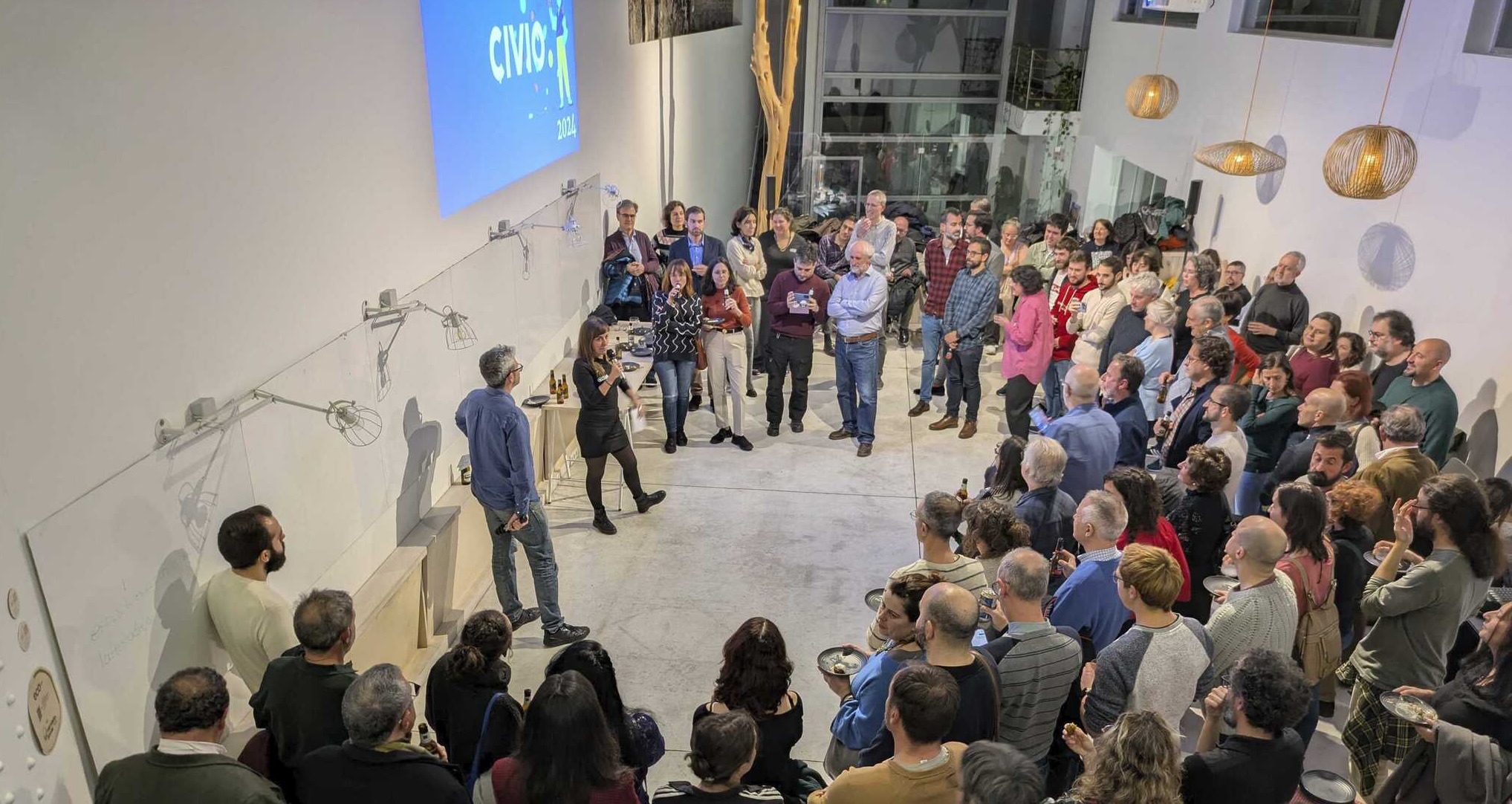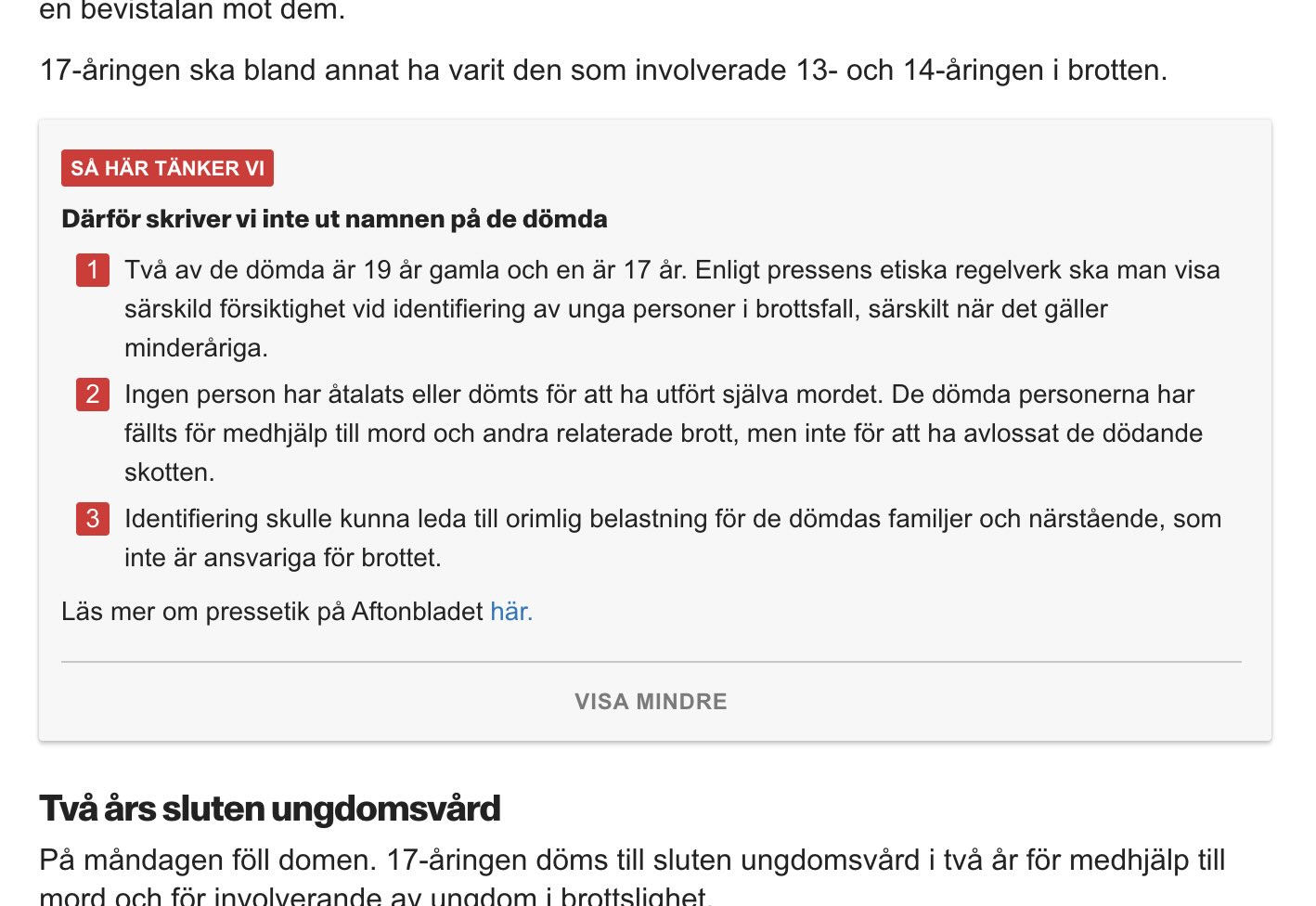These newsrooms are trying to boost trust through transparency. Is it working?

Eva Belmonte and David Cabo, co-editors of Spanish nonprofit Civio, speak at an event with members. | Courtesy of Civio
Across the world, much of the public does not trust most news most of the time: only 40% across 47 markets say they do, according to our latest Digital News Report. This may be playing a role in audiences turning off the news altogether or gravitating towards non-journalist figures to keep informed.
“Our problem is not simply that the public does not trust us, it’s that they do trust other dishonest brokers. We are not just witnessing a crisis of credibility, we are experiencing a crisis of credulity as well,” said Columbia Journalism Dean Jelani Cobb in this year’s Reuters Memorial Lecture.
Cobb suggested that journalists should be more transparent and show audiences how they do their reporting. This sparked my interest in exploring what radical transparency in journalism might look like and what audiences make of it. To find out, I spoke to five newsrooms from Spain, Sweden, the UK and the US that have experimented with different ways of being transparent in their work.
Can transparency increase trust?
Journalistic transparency has often been proposed as a way of combating the decline in trust in news. The idea goes that if publications explained their process by showing how their news is made, then audiences would be more trusting.
What does the research say? Our own research on trust in news suggests that transparency is generally viewed positively by audiences and is often ranked highly when people are asked which trust-building strategies news organisations should prioritise. When asked in the abstract whether specific transparency practices (such as explaining decision-making, for example) would increase their trust, most audiences perceived these positively by an overwhelming margin. You can see figures from Brazil, India, the UK and US in the chart below.
Our former Journalism Fellow Jussi Latval looked at whether transparency increases trust in this own project, which suggests that transparency often has no effects on trust due to mixed evidence and contextual factors like political polarisation or cultural biases. Ultimately, trust is shaped by broader societal forces beyond journalism itself, making transparency an incomplete solution to a very complex problem.
However, the newsrooms I spoke to still find value in sharing their process with their audiences, for both transparency and accountability purposes.
Civio, a Spanish news outlet that specialises in holding public authorities to account, is one of those newsrooms. Eva Belmonte, Civio’s Managing Editor, said that they’ve always wanted everything to be out in the open: from their finances to sharing their whole methodology.
“We have done this from the beginning for two reasons,” she said. “On the one hand, to create trust: this idea that what a journalist writes is sacred no longer stands; you have to prove that what you are saying is true. On the other hand, it’s important that we prove that what we were doing was replicable.”
Most of their readers do not attempt to replicate Civio’s methodology, Belmonte said, but the fact that the methodology is there helps to build trust in the long term. This is particularly true for digital outlets, which can’t count on the clout often associated with legacy brands.
“We often make mistakes,” Belmonte said. “But if you have explained how you’ve reached your conclusion and then you have done it wrong, at least you have explained your process. It is important for us to abandon this aura. Just being a journalist doesn’t mean that what you say it’s true.”
A transparency box
Swedish media company Schibsted recently began to implement what they call “ethics boxes” in some of their articles to explain to audiences some of the editorial decisions they’ve made regarding a given story.
Martin Schori, Deputy Publisher and Director of AI and Innovation at Aftonbladet, one of Schibsted’s main titles, told me that this project began as a way to increase trust in their journalism and reach the most elusive audiences.
“We have taken [trust] for granted for a very long time,” he said. “We overestimate the audience’s knowledge about journalism and the journalistic process. We have lost chunks of the audience that might never return for political reasons. I don’t think that having an ethics box in articles is going to solve that problem. But I do think that these boxes can attract people who are healthily suspicious rather than hardcore enemies.”

While the articles getting the “ethics box” treatment are only crime-related for now, Schori says that there are plans to expand the project to more content.
The focus on crime comes from a recurring dilemma facing news outlets in Sweden, where some newspapers might choose to reveal the name and the face of a suspect while others decide not to. Schori said they get questions about those editorial decisions every day. He also explained they have started to share their own reporting processes by explaining, for example, how they verify sources.
“The ambition is to share as much as possible in these boxes,” he said. “We just added one to explain how we deal with anonymous sources and sources in general.”
Why corrections matter
Tangle, an American non-partisan politics newsletter run by journalist Isaac Saul, has focused their transparency efforts on their corrections policy. Over 90% of its revenue comes from paying subscribers. They get access to premium Friday content, the comments section and insider info about the business.
When Saul started Tangle in 2019, he saw a trend within news organisations: An internet user would spot an error in the piece and call them out;instead of issuing a correction, the organisation would quickly update the piece without actually explaining or owning up to the error.
“The first time I ever had a reader write in and issue a correction in Tangle, the next day in the newsletter I just put it at the top in a bold headline print section that just said ‘correction’, explained what the error was, notified people that I’d updated the story, and also explained how it happened,” he said when we spoke for this piece.
Saul said that this first correction generated many positive responses within his audience for putting up the correction front and center, rather than an addendum or a footnote in the piece.
Tangle keeps a running count of how many corrections they have issued. At the time we spoke, the newsletter had published 132 corrections in 294 weeks.
“I just made it the editorial standard for us: if there was a correction, in the next day's newsletter, we would put it front and center. I think it builds trust with people and it’s the right thing to do,” Saul said. “People always complain that most news consumers see the initial story but never see the correction.”
Another thing Saul does is being very open about his own biases. His newsletter’s aim is to share different perspectives across the political spectrum on a particular topic. In addition to sharing perspectives left and right, Saul ends each newsletter by sharing his own perspective.
“I'm not trying to tell you what's true or to pretend that my opinion is the right one. But it’s an act of transparency for me to say ‘here are my biases and here’s where I’m coming from,’ he said. “My audience is typically sceptical of the traditional press. So it’s good to say, ‘This is what I’m holding as the person providing you the news and that’s helpful context for you to analyse us as an organisation.’”
Inviting your audience in
Belmonte from Civio stressed they are happy for other newsrooms to build up on their work. As many of the datasets they acquire are usually difficult to get, they would like to see journalists, academics, lawyers and even students use the datasets for their own research.
Replicability is a core principle in the scientific method and journalists are applying this tenet requiring that research is described with enough detail and transparency so that others can repeat the methodology and verify whether the same results can be achieved.
Civio is not the only organisation that aims its work to be replicable. The US investigative outlet The Markup has a separate section on their page called Show Your Work where they essentially lay out detailed methodology, datasets, and statistical techniques used in their investigations.
Editor-in-chief Sisi Wei told me that while they indeed do it for transparency’s sake for all their readers, they go into so much depth because they want people to be able to replicate their investigations if they desire to do so.
“Here was the idea behind this,” she said. “If we are going to be doing these in-depth investigations that pair traditional journalism with technology and how we do them, we also wanted to be transparent on the exact steps that we were taking because we are trying to help people understand that you can be very transparent as a journalist. We also wanted to make sure that anybody out there who is a data analyst or a programmer or somebody who’s an expert in what we're doing can in fact go so far as to replicate our whole methodology to show this themselves.”
Even if you don’t have any technical expertise, The Markup publishes resource guides that are meant for people to replicate their investigations even without specialised skills.
An example Wei mentioned was this series of investigations they published on internet price discrimination in the United States. She and her colleagues uncovered how people living in richer neighbourhoods get significantly faster internet than those living in poor neighbourhoods for the same amount of money.
“We looked at the top most populated city in every US state, but there are tons of other places where people have internet, so we made a guide so that anybody who wanted to help us could replicate our methodology just for their community,” she said.
They created a resources guide where they taught people how to audit whether what these internet companies were telling the government about their pricing was correct and where to report that information if it was incorrect. Wei said over 5,000 people participate in this exercise.
A do-it-yourself mindset
Bellingcat’s founder and creative director Eliot Higgins shares a similar mindset to the other people I spoke to. The investigative outlet specialises in open-source investigations, and they share datasets, methodologies, and resources with their audience. Higgins told me he started sharing how he conducts his investigations to build credibility amongst his followers.
“For me, it was about adding useful information to the information environment around these topics, not only to get stuff out there, but so other people could pick up and kind of do their own stuff with that,” he told me. “It’s almost like a fragmented version of research where I do a bit of it, and then someone else can pick it up if they want to build on top of that.”
In an increasingly polarised information ecosystem, Higgins believes that by being transparent and enabling others to replicate their findings, they offer an alternative to simply reinforcing existing beliefs.
Bellingcat’s founder stressed he’s aware that well-researched information alone cannot guarantee trust. “It can help you build that trust amongst the audience in a kind of network effect, where lots of people see Bellingcat’s name being cited by other organisations that they do trust,” he said.
Bellingcat’s community is huge. Their Discord server, a place where Bellingcat researchers discuss their latest investigations and collaborate with their audiences, has about 30,000 members. These users dig into a range of topics, and sometimes they are even able to inspire original reporting on those ideas.
A good example is a group of people on their server who looked into an oil spill off the coast of Trinidad and Tobago, a small country in a chronically underreported region. By using processes and platforms Bellingcat had shared with their audience, Higgins said, these individuals were able to track marine traffic and use satellite information to help identify which ships were involved in the oil spill. Bellingcat reported on this story later, which eventually prompted the International Maritime Organization to investigate the spill.
“Our work is the most valuable where we’re creating a discourse that isn’t just informing people but actually getting them involved with the creation of good information because they value good information themselves and are part of a community that values that,” he said.
There are certain limits, however, to what transparency can do to bolster trust. At least two of the people I spoke to mentioned that deep-seated preconceptions about media agendas can limit the effectiveness of these methods as audiences often view transparency efforts through their existing biases and political lenses.
According to the chart above from our own research on trust, transparency tends to deepen trust most effectively among those who already have positive attitudes towards journalism, reinforcing existing trust levels rather than necessarily convincing the deeply sceptical. According to the chart below, from this chapter from our Digital News Report 2024, transparency about processes and standards matters more to political junkies than to those less interested in politics.
Most of my sources acknowledge that only a minority of their audience actually engages with these methodologies and resources. Having this information available provides a sense of security where audiences can test their process rather than blindly believing in their work. A significant part of the audience takes trust simply in knowing that detailed information (like methodology or data) is available, even if only a small part actually reads it in depth.
“A significant part of our audience takes trust in knowing that it’s there,” said Wei. “They know they can go and read the parts that are relevant to them.”
In every email we send you'll find original reporting, evidence-based insights, online seminars and readings curated from 100s of sources - all in 5 minutes.
- Twice a week
- More than 20,000 people receive it
- Unsubscribe any time
signup block
In every email we send you'll find original reporting, evidence-based insights, online seminars and readings curated from 100s of sources - all in 5 minutes.
- Twice a week
- More than 20,000 people receive it
- Unsubscribe any time






